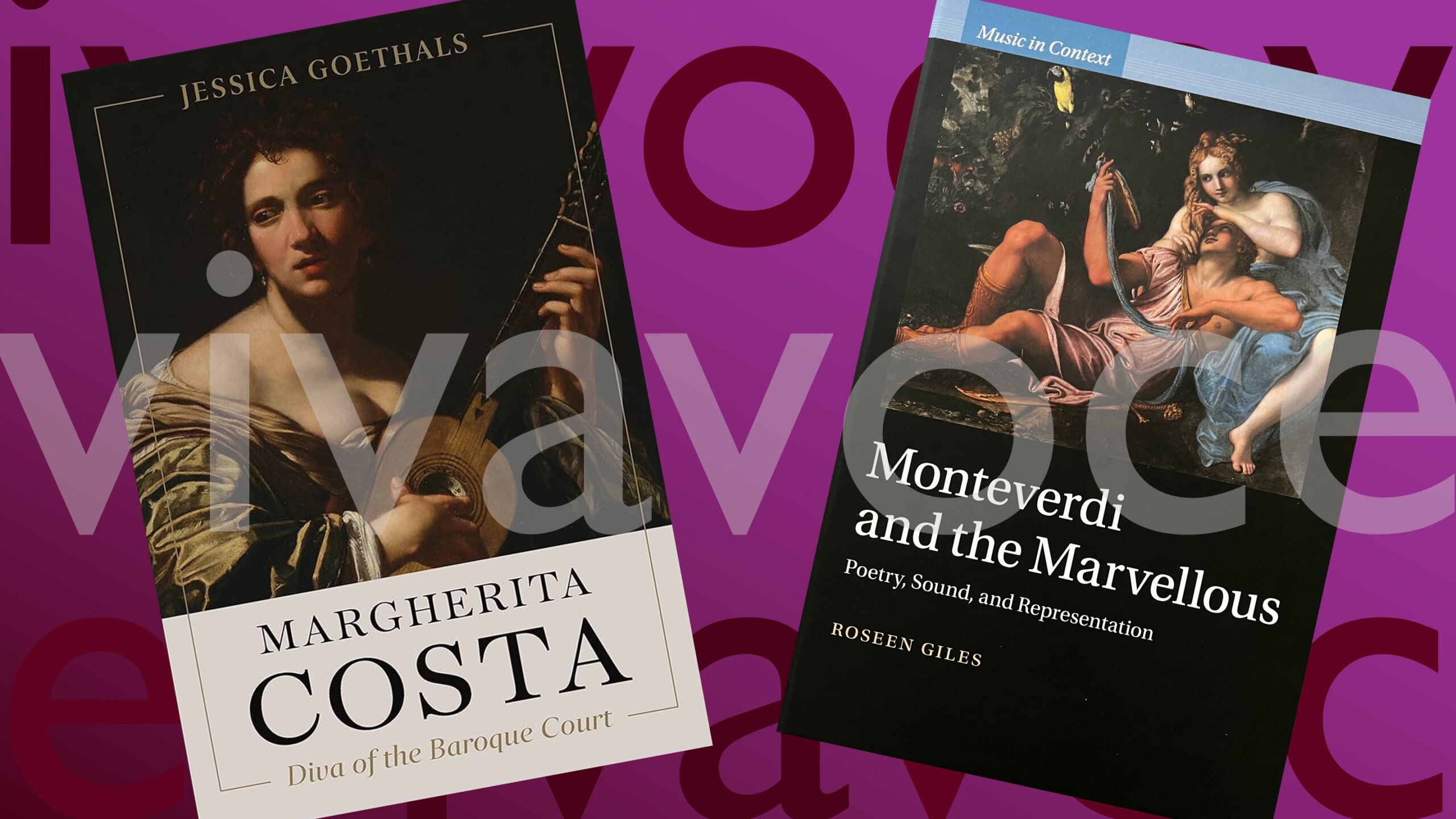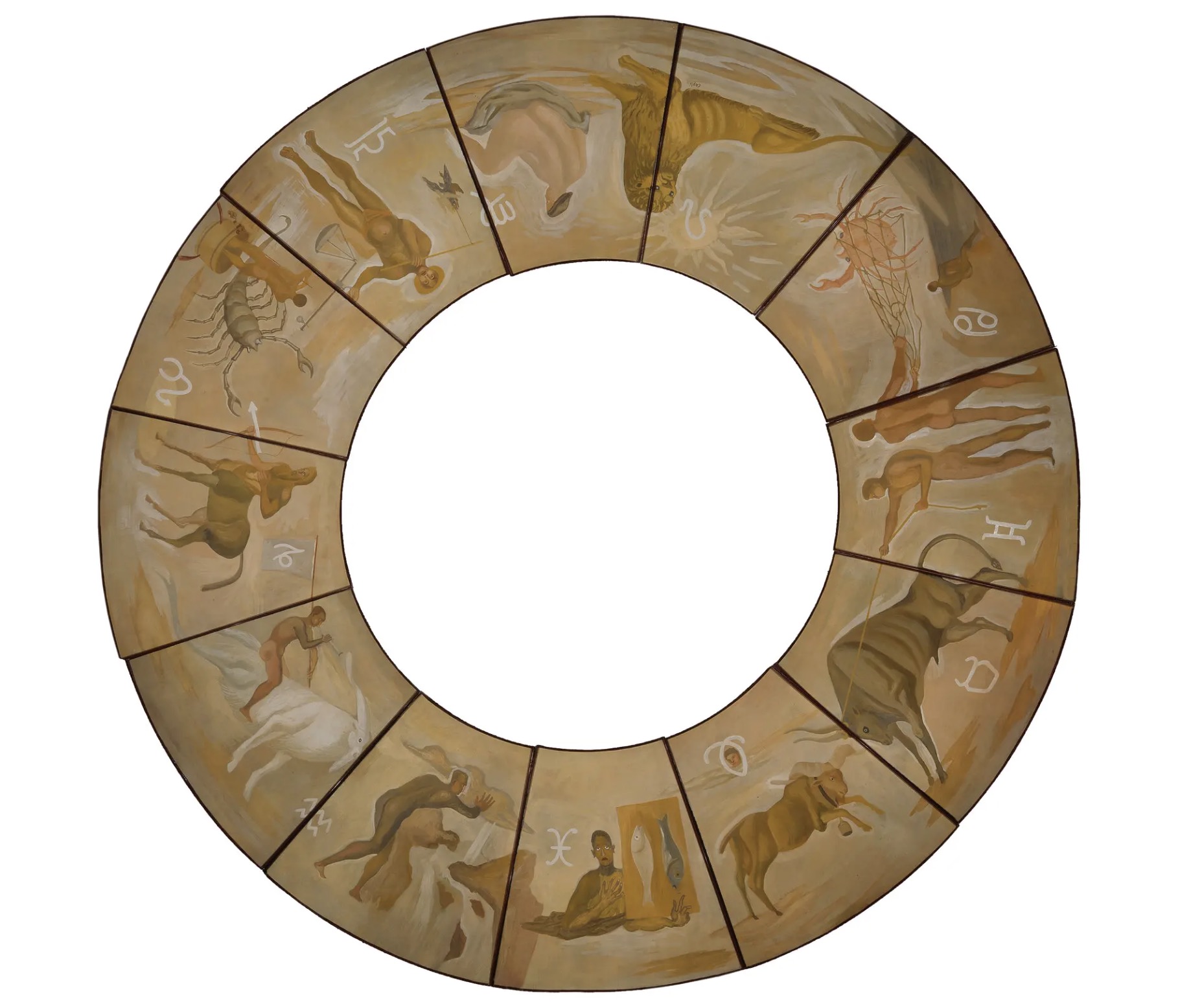
- Book Presentation
The Diva and the Maestro
Song, Poetry and Performance in Baroque Italy
View details about the event: The Diva and the Maestro

Bruno Walter Auditorium at the NYPL at Lincoln Center (111 Amsterdam Ave)
Please note:
This event takes place at
Bruno Walter Auditorium
The Library for the Performing Arts, Lincoln Center, 111 Amsterdam Avenue
This event is part of
GIORNO DELLA MEMORIA 2024
In collaboration with
Primo Levi Center
Center for Italian Modern Art
The Triumph of Bacchus and Ariadne
Concert for piano and choir after the poem
Del doman non v’è certezza (Tomorrow Holds No Certainty) by
Lorenzo Il Magnifico (1449-1492)
Music by
Vittorio Rieti (1898-1994)
Concept and design by
Corrado Cagli (1910-1976)
for George Balanchine’s Ballet Society (1948)
Featuring Cantori New York:
Mark Shapiro, Artistic Director
Shelén Hughes, soprano
Matthew Anchel, bass
Baron Fenwick, piano
First New York performance since its 1948 premiere
On the occasion of the exhibition of Corrado Cagli’s work
Transatlantic Bridges: Corrado Cagli 1938-1938
Center for Italian Modern Art (closing on January 27 2024)
Followed by a presentation by
Raffaele Bedarida
Author of Corrado Cagli: Transatlantic Bridges 1938-1948, CPL Editions 2023
Total duration: 80 min.
Please note:
This performance is free and open to the public on a first-come first-served basis.
About the concert
The score of The Triumph of Bacchus and Ariadne will be presented in its entirety for the first time since 1948. Cantori New York directed by Mark Shapiro will perform Vittorio Rieti’s music for the Magnifico. In 1948, the New York City Ballet presented The Triumph of Bacchus and Ariadne, a Renaissance poem by Lorenzo de’ Medici whose refrain “del doman non v’è certezza” (tomorrow holds no certainty) resonated with the experience of displacement in the immediate aftermath of World War II.
Behind the project was the painter, set designer and cultural organizer, Corrado Cagli. Echoed in this performance are his reckoning with his life in fascist Italy, the catastrophe of the war, and the mass murder of the Jews. Cagli’s first exhibition in New York since 1937 is on view at CIMA through January 27. The exhibition’s curator Raffaele Bedarida will give a brief overview on the history of the piece and Cagli’s work.
* * * * *
Read more: “An Artist Shattering Boundaries in Pursuit of Freedom”
Corrado Cagli, an artist of the 1920s through the 1970s, is still defying categories like “Italian artist” or “gay artist,” as a show at the Center for Italian Modern Art reveals.
By Jane L. Levere, New York Times
In 1937, Corrado Cagli, a little-known Italian artist, showed a painting at the Comet Gallery in New York and instantly became the talk of the town.
Inspired by the celebrated series of cardplayers by Cézanne, who earlier that year had an exhibition at the Museum of Modern Art, Cagli’s work veered far from the French master’s Provençal laborers of the 1890s, with their pipes and tradesmen jackets: Unlike those gruff, rustic subjects, Cagli’s are young men in different stages of undress, homoerotically glancing at each other while making encircling gestures.
Immediately recognizable to the public, the Cagli painting also caught the attention of major publications that featured it, including Art Digest and The New York Times, which published a photo.
Cagli, who was gay and Jewish, visited the exhibition at Comet, never expecting that he would return to New York two years later, seeking refuge from Benito Mussolini’s antisemitic racial laws of 1938, which excluded him from public exhibitions and state patronage.
Now, for the first time since 1937, Cagli’s painting of cardplayers also has returned to New York, in an exhibition devoted to the artist at the Center for Italian Modern Art in SoHo. The current show, “Transatlantic Bridges: Corrado Cagli, 1938-1948,” brings together a dizzying array of historical, social and cultural phenomena, all personified in the boundary-shattering life of Cagli, and illustrated here by drawings, paintings, photos and ephemera that explore themes of war, exile and discrimination.
Originally a supporter of the Italian dictator’s regime and a participant in his propagandistic revival of mural painting, Cagli was ostracized by reactionary Fascist critics for his religion, sexual proclivity and internationalist perspective on art, and immigrated to New York. He became a U.S. citizen in 1943.
“When we consider Cagli’s art today, we are also forced to rethink categories such as ‘Italian artist’ or ‘gay artist’ because all these are porous, constantly changing ways of interfacing with the world,” said Raffaele Bedarida, an associate professor of art history at the Cooper Union in New York and the curator of “Transatlantic Bridges.” He added that he was impressed that ”many ways of thinking could coexist in one person.”
Cagli volunteered for the U.S. Army and participated in the D-Day landing in France in June 1944 and liberation of the Buchenwald concentration camp in Germany in 1945 before returning to New York in 1946. Throughout his U.S. exile, Cagli made art even while in the Army, creating murals at military training camps in California and Washington State, as well as moving drawings of what he encountered on the battlefield, some realistic, others symbolic and alluding to his Italian and Jewish roots. When he returned from the war, he continued his drawing practice, creating works depicting tarot cards and geometric abstract art, among other subjects. He also became involved with George Balanchine’s and Lincoln Kirstein’s nascent Ballet Society.
Nicola Lucchi, CIMA’s executive director, said the group commissioned the show because the artist is “underrecognized, he’s not a household name” like Morandi or de Chirico.
Among Cagli’s earliest works here is a 1934 encaustic tempera study on 12 panels depicting zodiac signs for a fountain in Terni, Umbria. Lucchi suggested that the zodiac figures, male nudes (except for the female Virgo), display a “homoerotic tension.”
A 1940s oil on paper depicts David using a sword to slice off the head of the much taller Goliath. According to Bedarida, images of Jewish characters beheading their enemies became a “thematic obsession” of Cagli after the implementation of the racial laws. “By making his Davids resemble the famous Davids” of Donatello, Michelangelo and Verrocchio, Cagli “explicitly challenged the Fascist rhetoric of Italy’s humanistic tradition,” said Bedarida, whose monograph on Cagli’s wartime exile from Italy has been released in English by Centro Primo Levi Editions
Several of Cagli’s works here are owned by MoMA, including a 1945 transfer drawing of the bridge at Worms, Germany, bombed by the Allies at the end of World War II. A powerful drawing from a private collection in Rome illustrates corpses at Buchenwald, and helped him win a Guggenheim Fellowship in 1946.
Not every work here is morbid, nor are all by Cagli. Among the most amusing are two pieces by Saul Steinberg, who studied architecture in Italy in the 1930s and faced persecution there as a Jew; he and Cagli may have known each other during this period and definitely socialized when Cagli lived in New York. Steinberg’s 1948 ink drawing on music manuscript paper features a person surrounded by elaborate, feather-like designs who plays what appears to be a cello or bass; a bird perches on the bow. Steinberg inscribes the work, in Italian, to Cagli, “pittore di strumenti musiCagli” — a tweaking of “a painter of musical instruments” and “musicali.”
Rounding out the exhibition are works related to Cagli’s collaboration with the Ballet Society on “Triumph of Bacchus and Ariadne,” a ballet for which he created costumes and scenery. Here are black and white photographs of dancers in costume, plus a 1948 photo Irving Penn shot for Vogue that features Cagli, Balanchine, the ballerina Tanaquil Le Clercq and the composer Vittorio Rieti.
This section also features a virtual reproduction of Cagli’s 1946 proposal to Kirstein for the ballet, illustrated with elaborate watercolor drawings of figures in movement, as well as a stunning portrait of Bacchus.
Giuseppe Briguglio, the director of Cagli’s archive in Rome, said the CIMA exhibition is only the second the artist has had outside of Italy since his death in 1976. Cagli had many gallery and museum exhibitions in the U.S. before, during and after his exile there, including at the Wadsworth Athenaeum in Hartford, Conn., and at MoMA.
While Cagli did not have a signature style, Alessandro Cassin, director of publishing for Centro Primo Levi in New York, said he exercised his freedom to “move among different media, pushing boundaries, thinking ahead to the role of the artist whose creativity is not bound by style.”
Cagli, Bedarida, the curator, said, “saw art as a tool through which communities are built, both imaginary communities, such as a nation, for which art acts as binder and voice, and actual communities of friends and collaborators for which art practice provides a platform for interaction.”
Cagli returned to Italy in 1948, to his artistic and national roots. As the curator, said, “He always considered himself to be an Italian painter, despite everything.”
Perhaps not surprisingly, back in Italy he became a political leftist and opposed what Bedarida called the United States’ “aggressive policy” during the Korean War. Remarkably, he renounced his U.S. citizenship in 1951 and returned his passport to the U.S. embassy in Rome.
Cagli, Briguglio said, didn’t follow the market or commercial galleries. “He was free to do what he wanted. He represents freedom to me, freedom in the public and private spheres he was active in.”